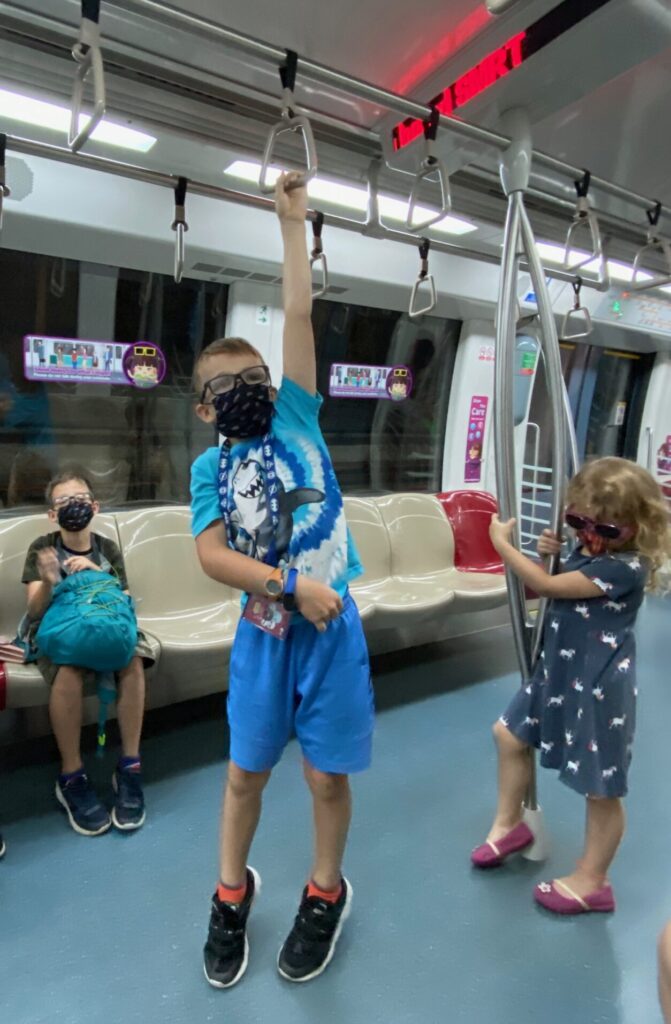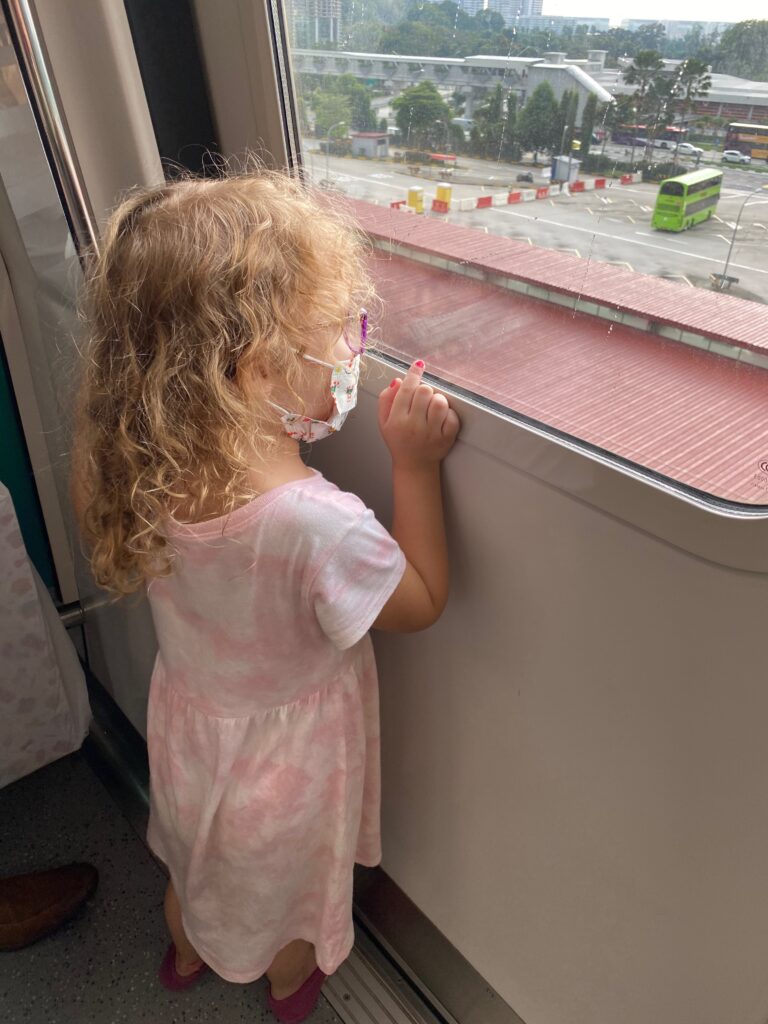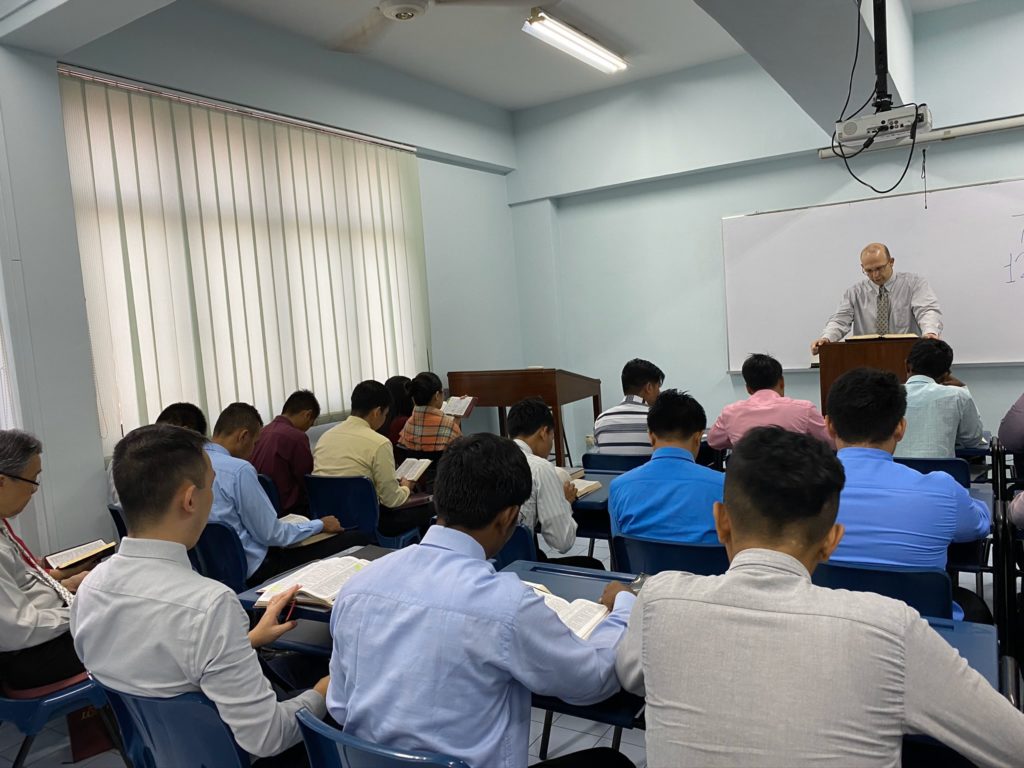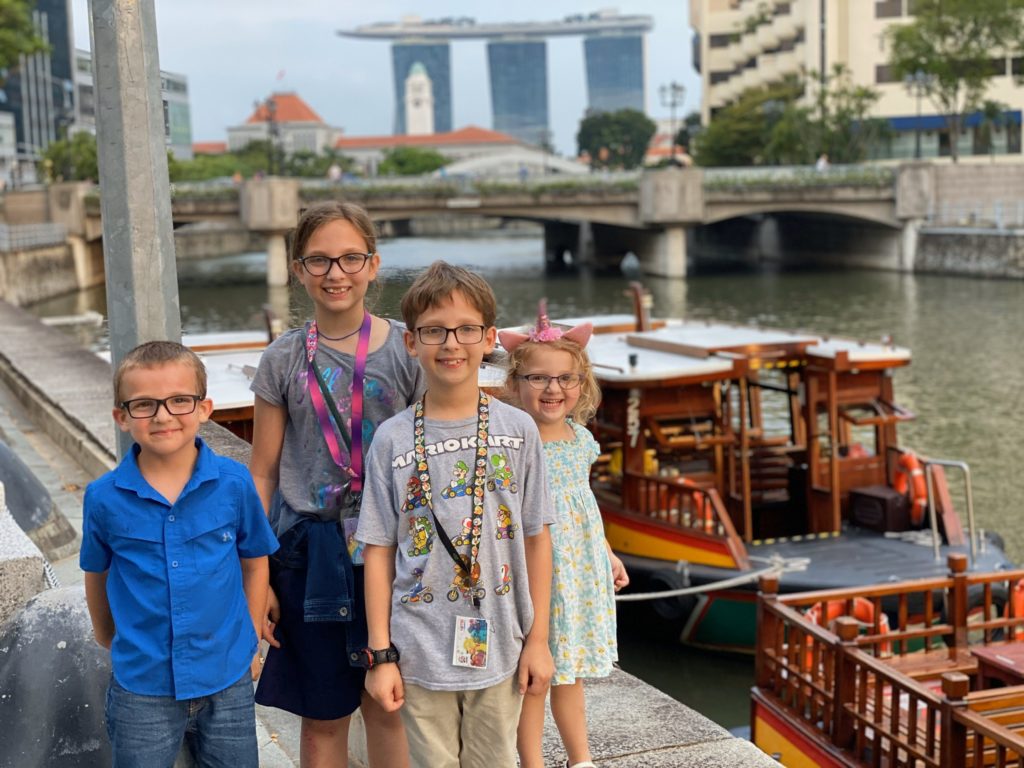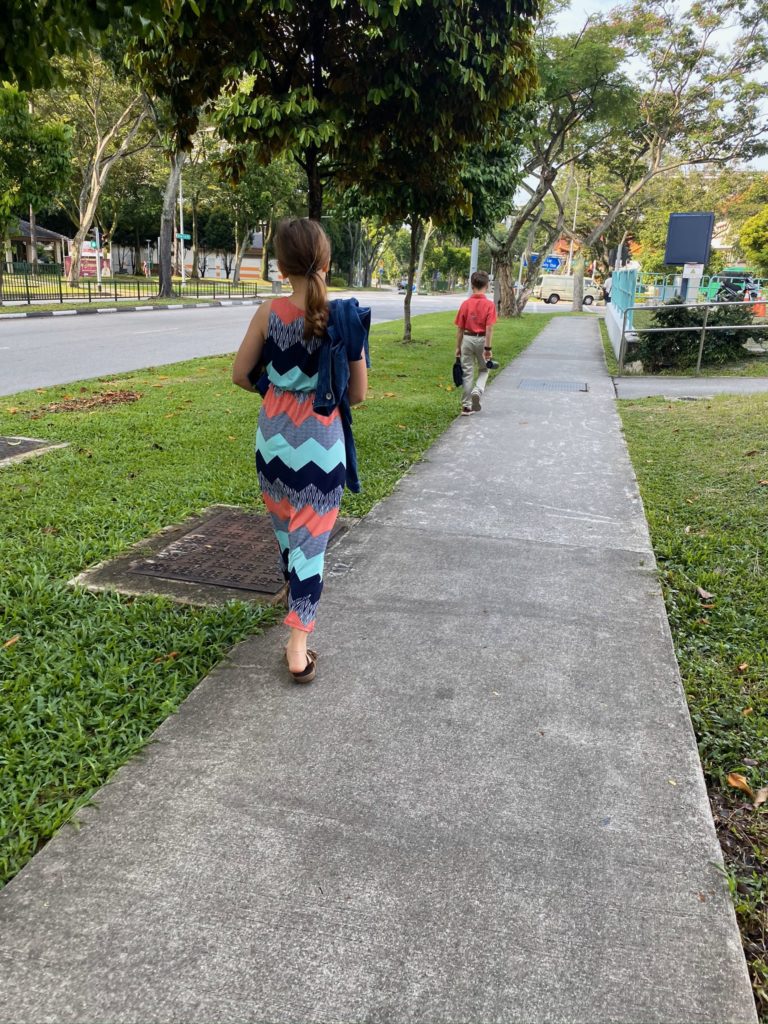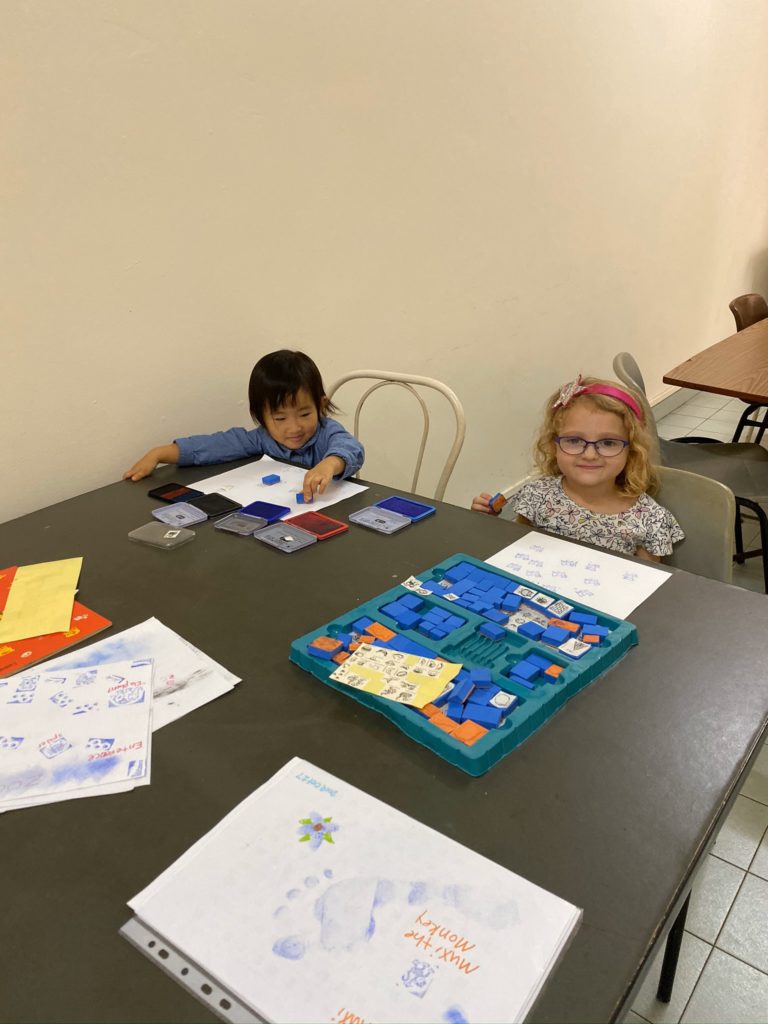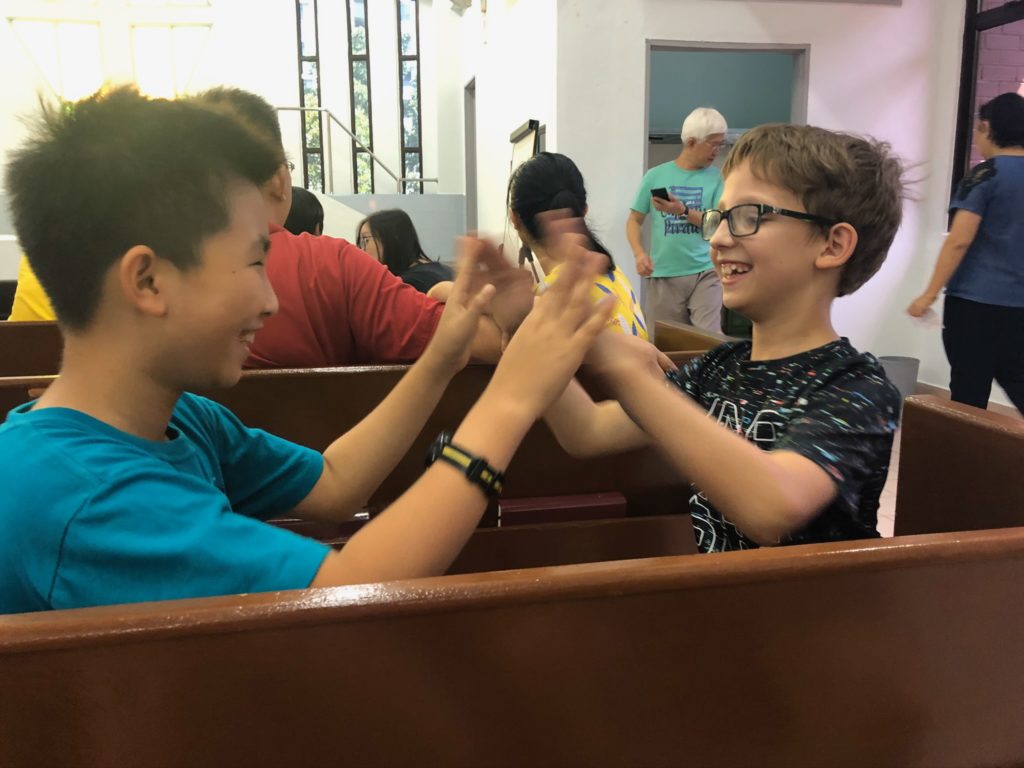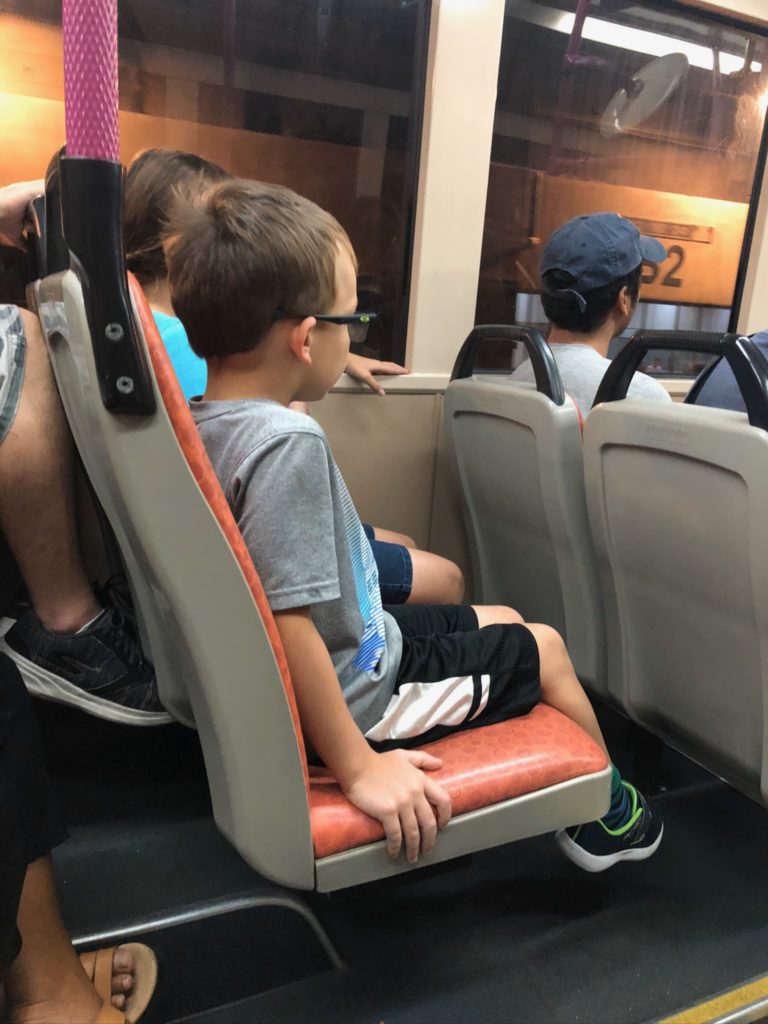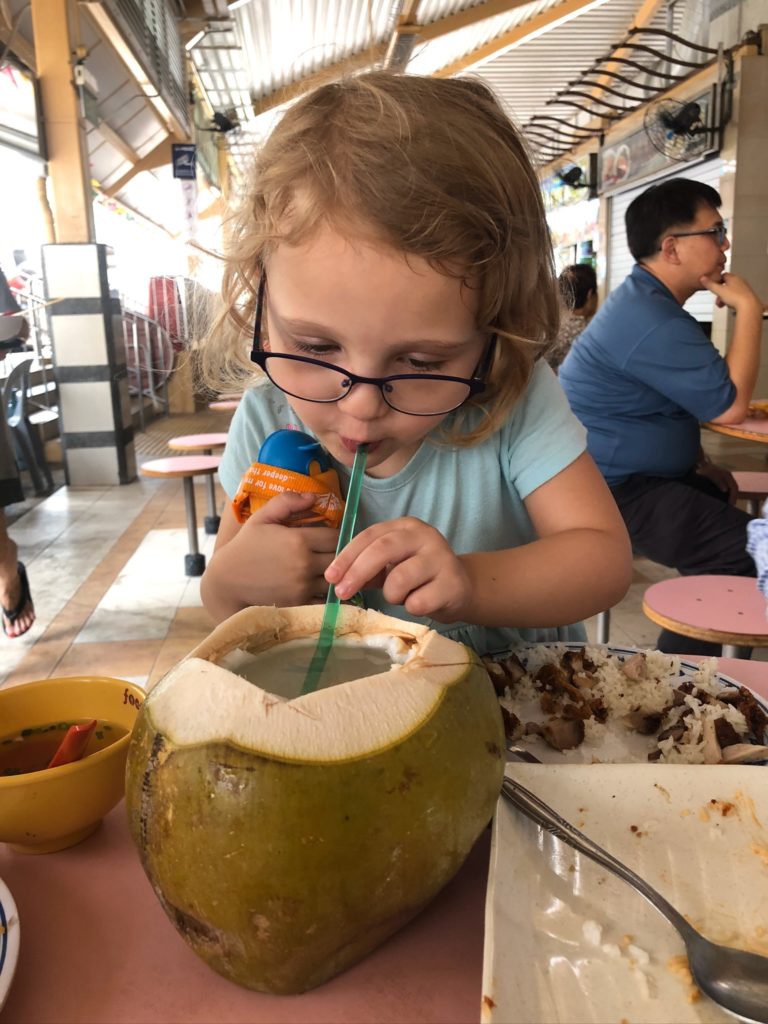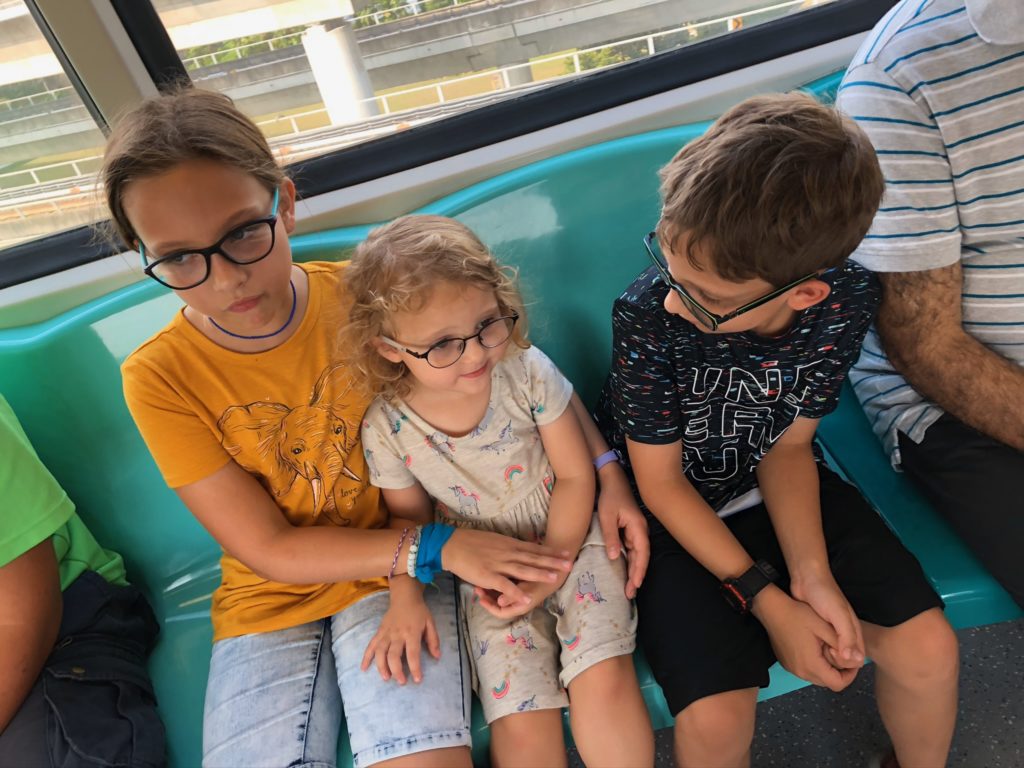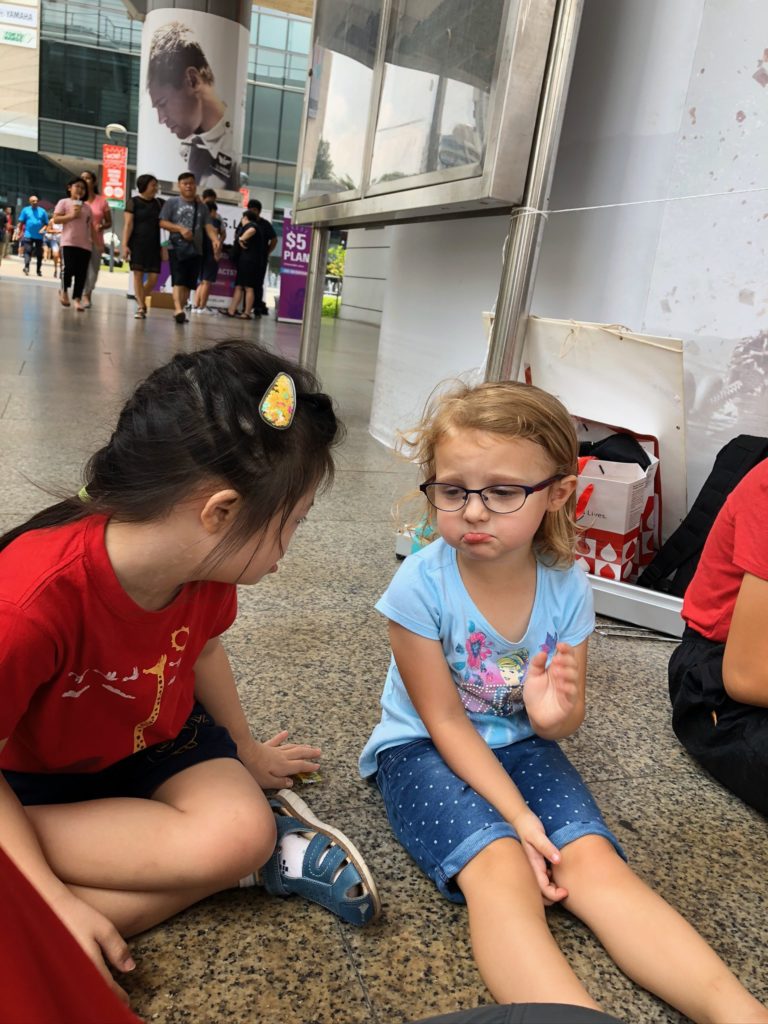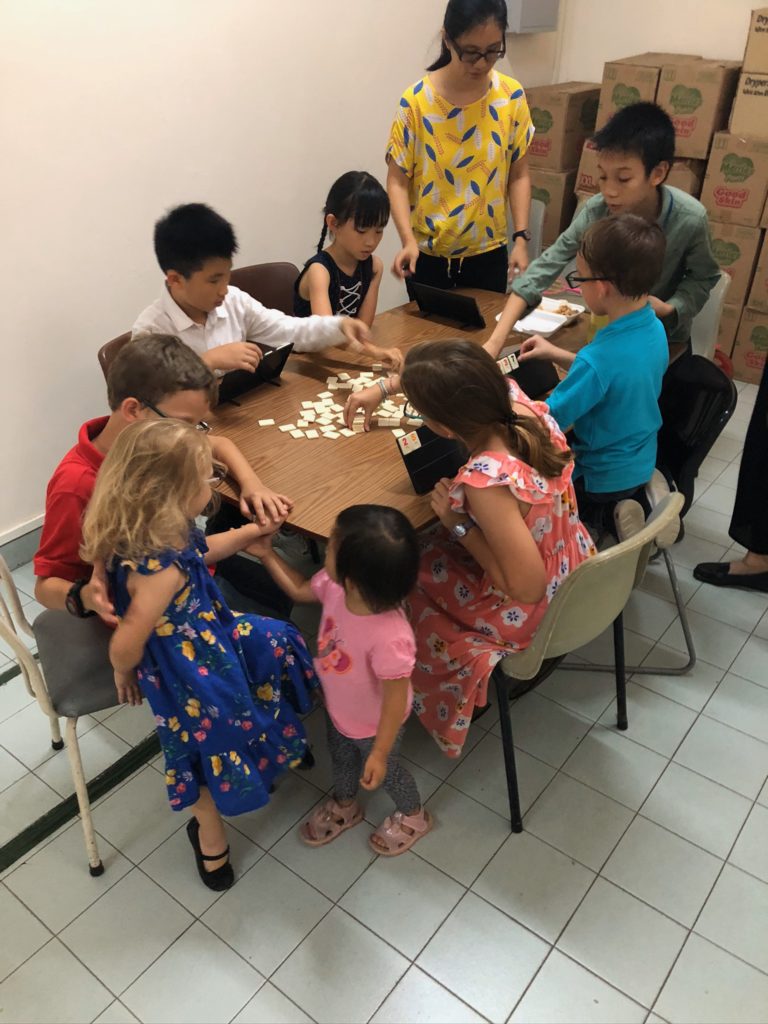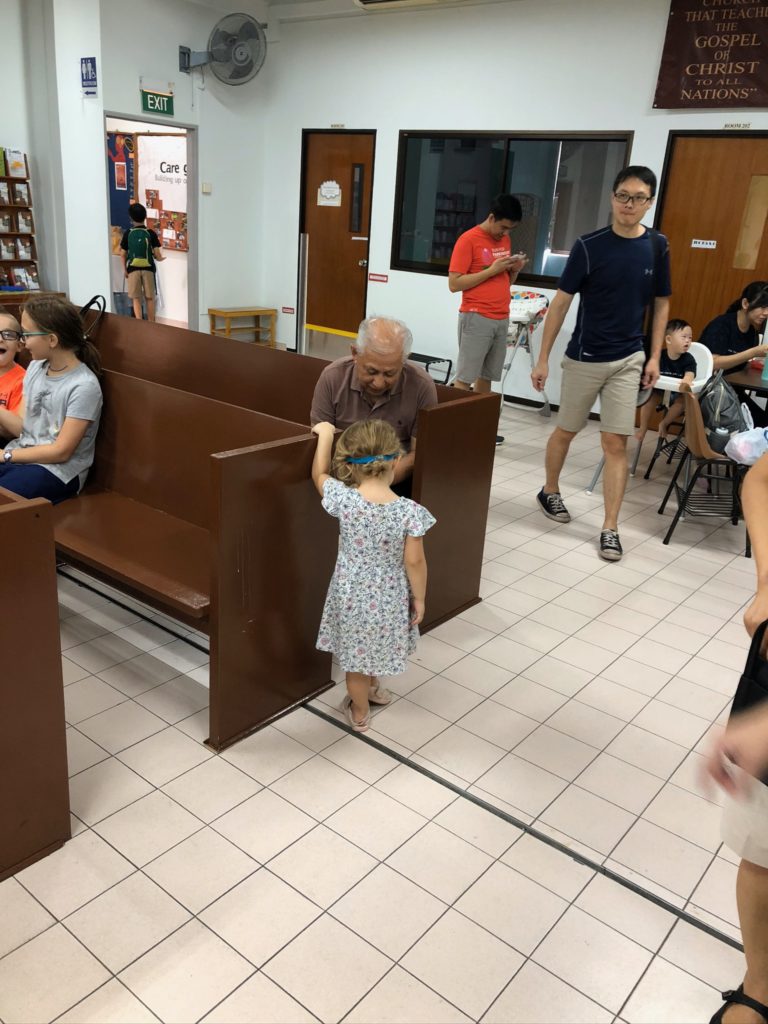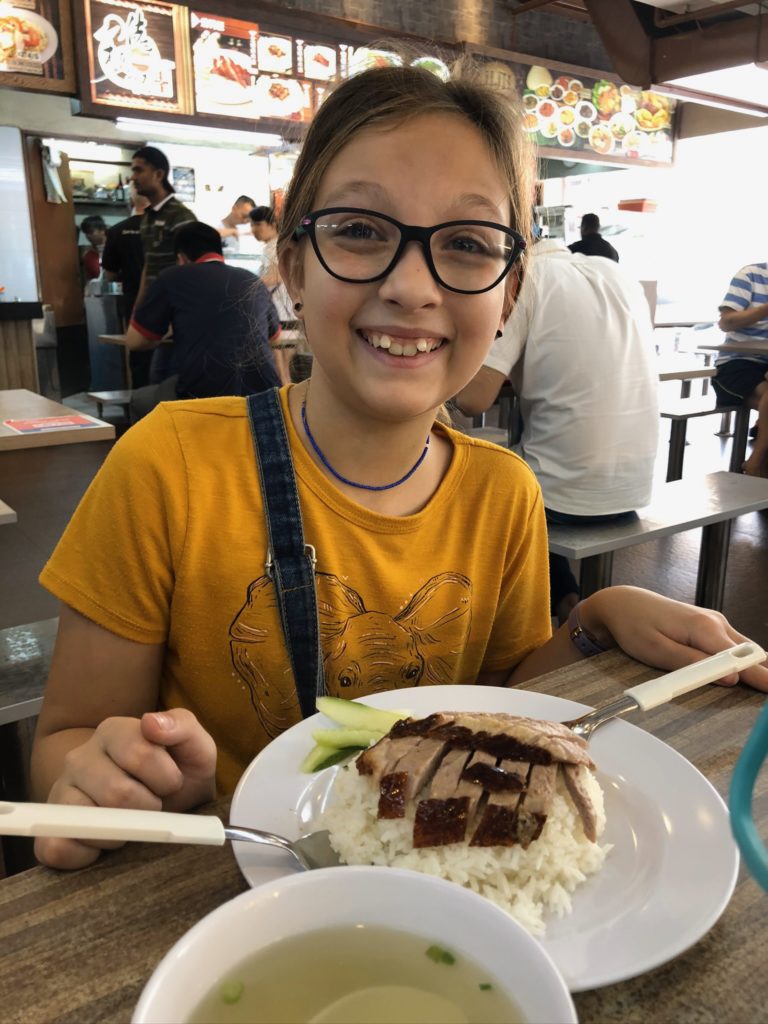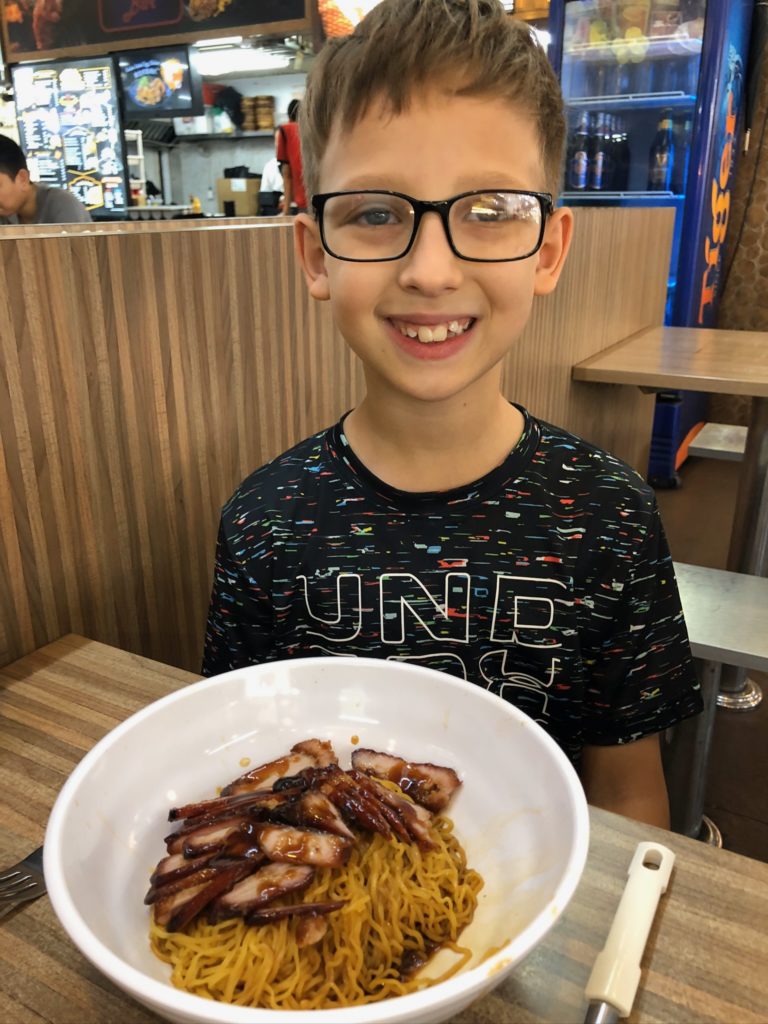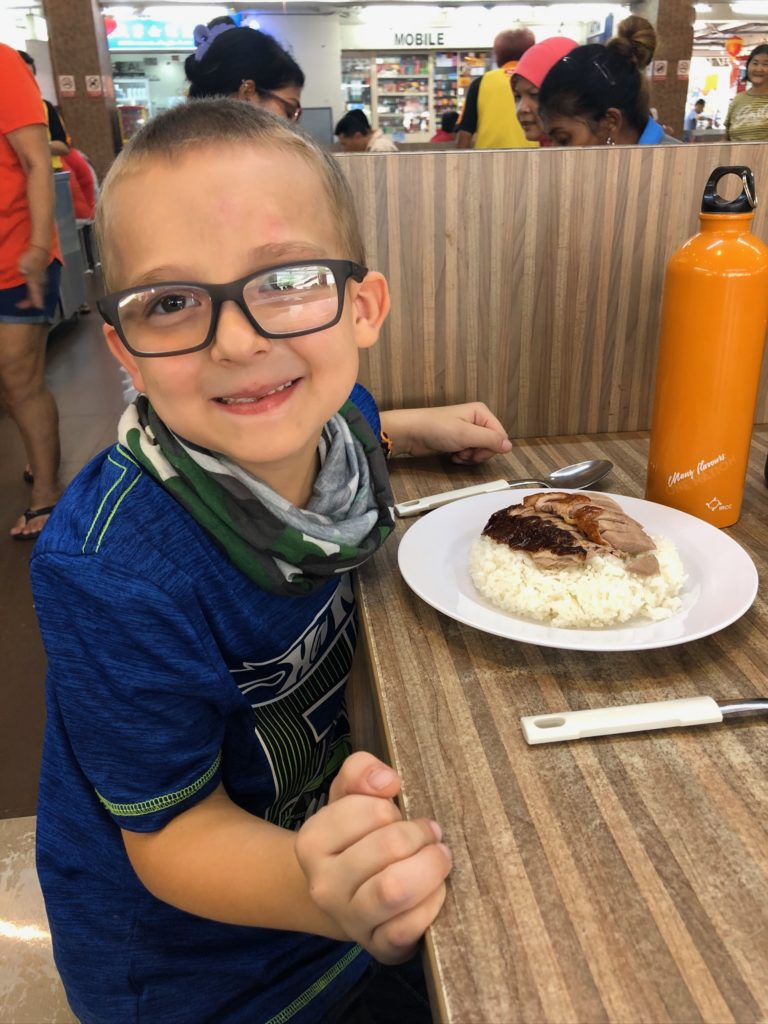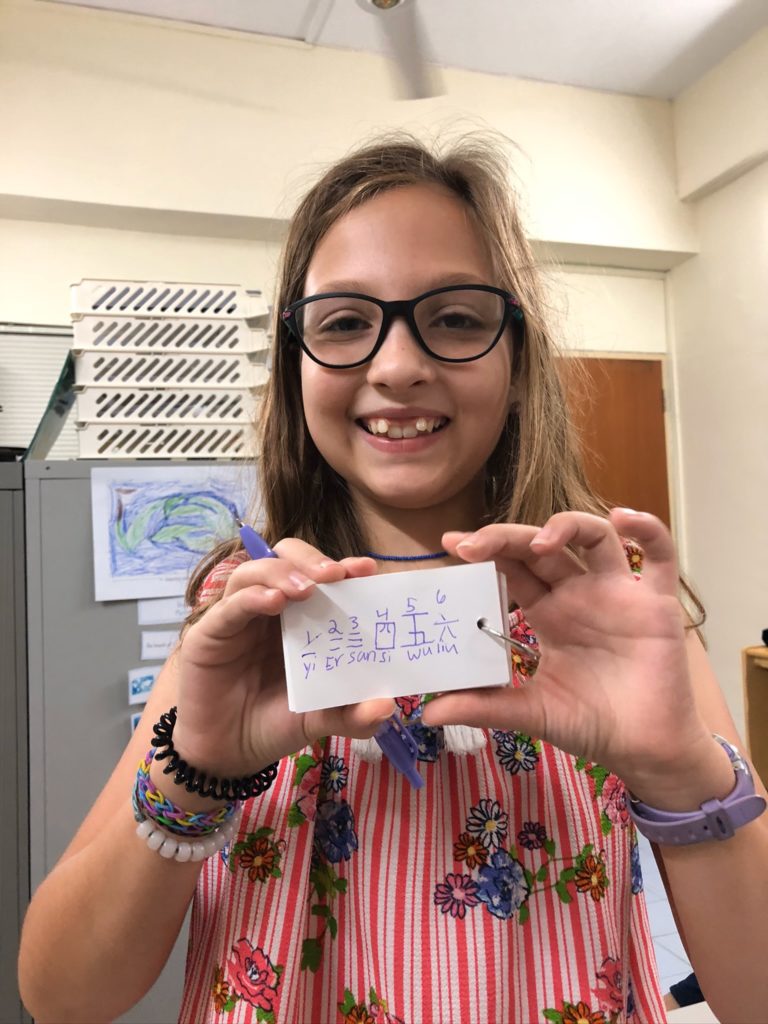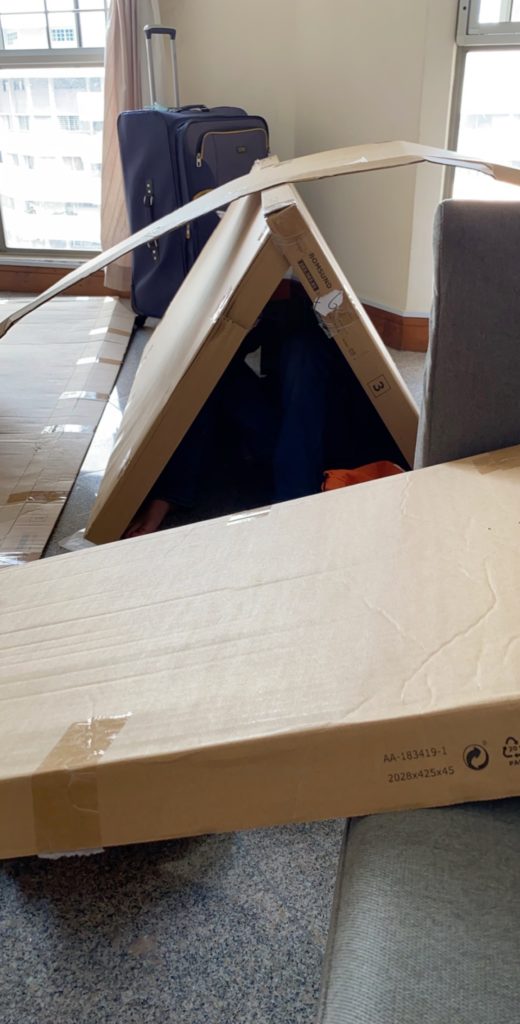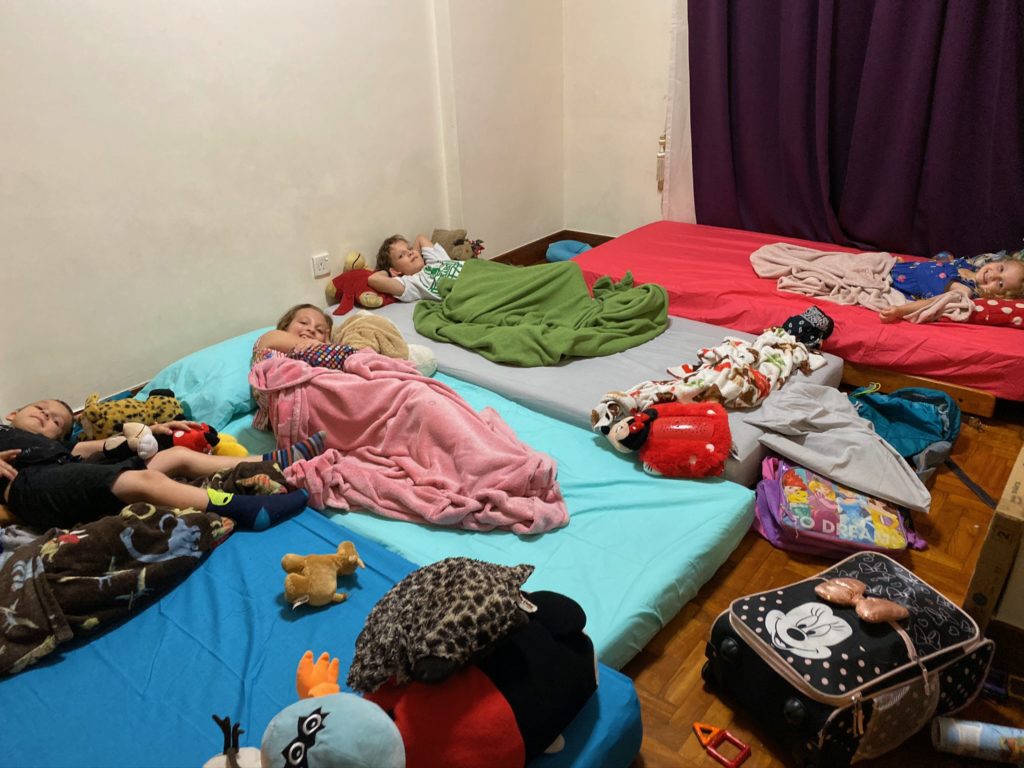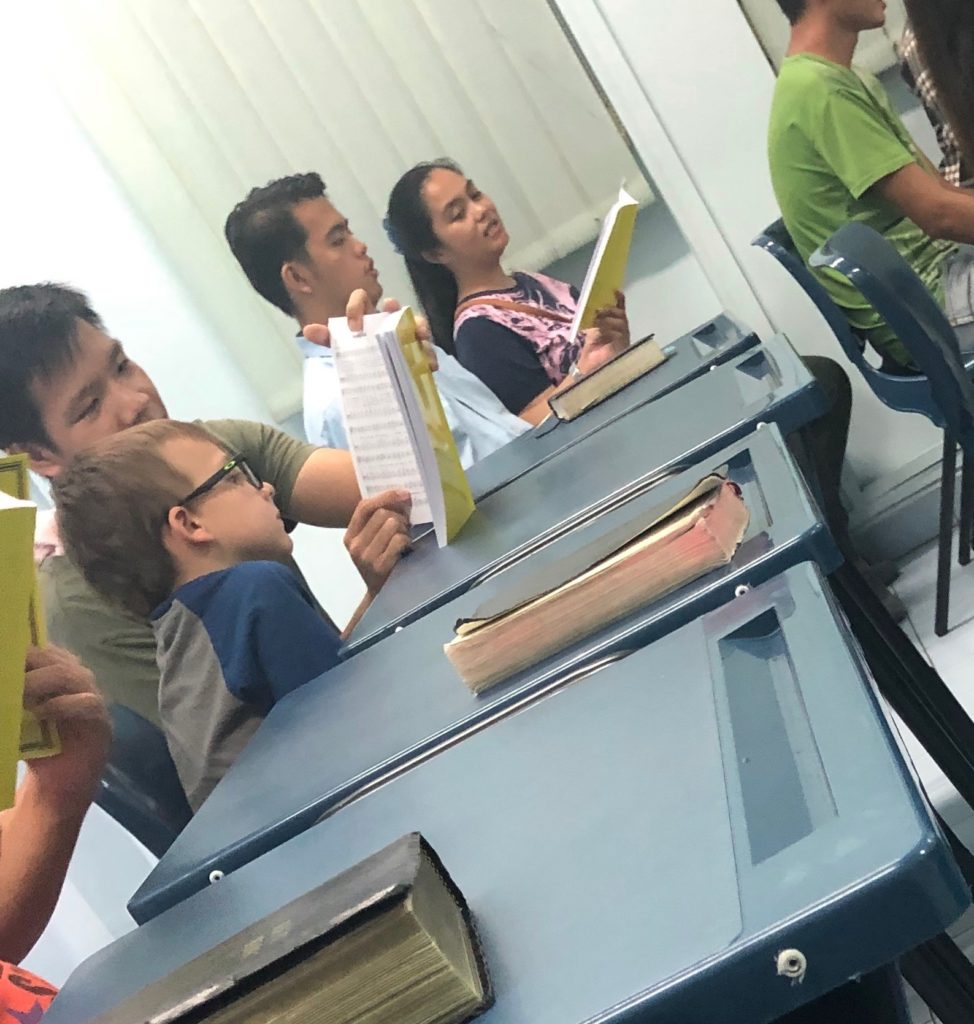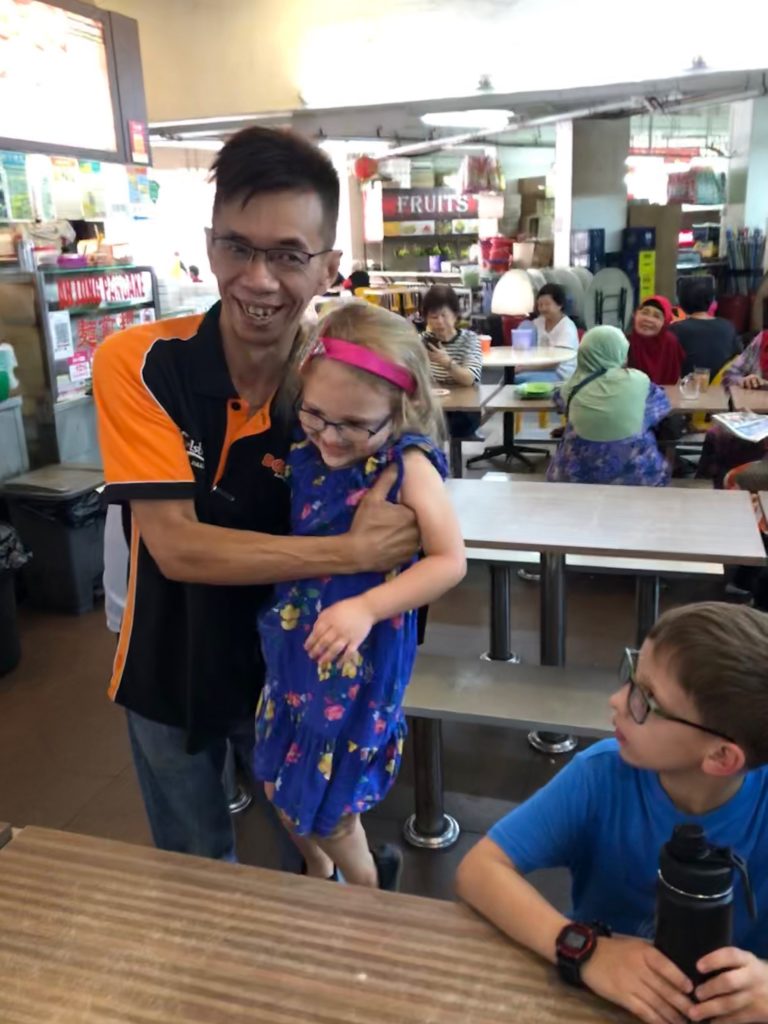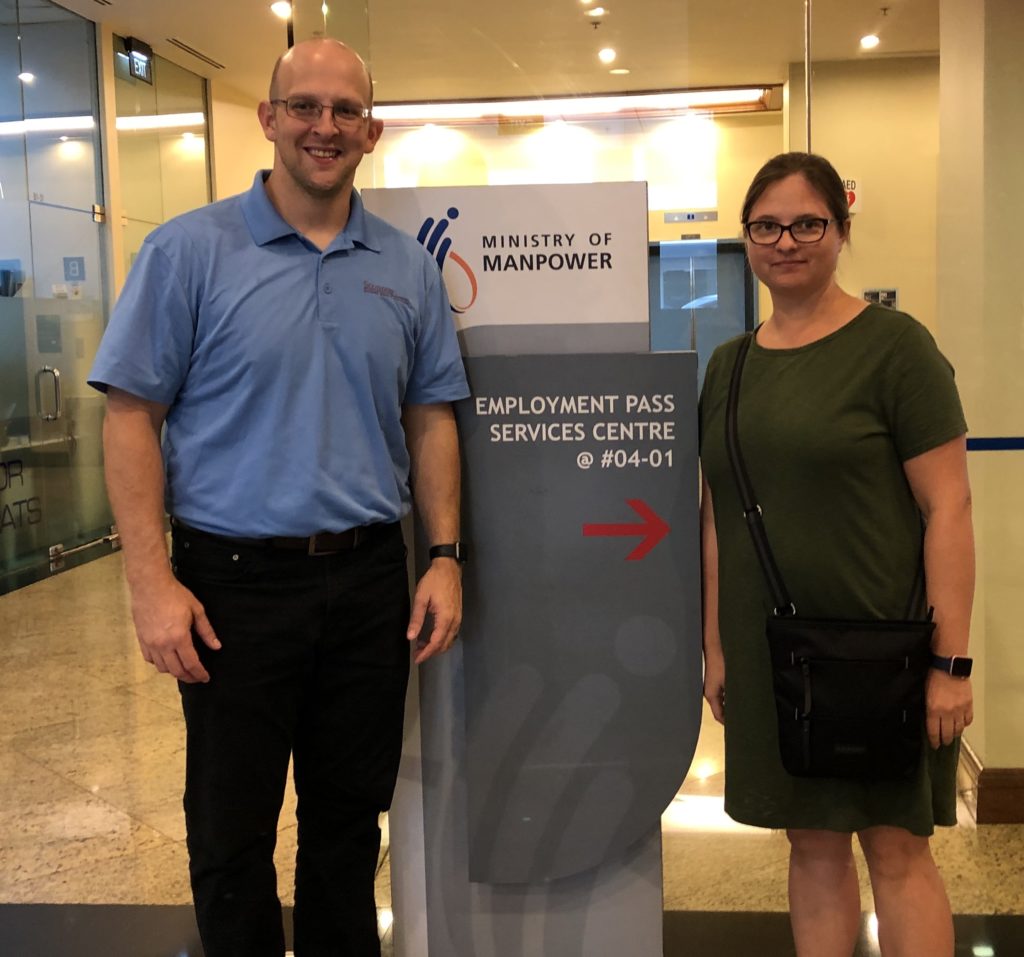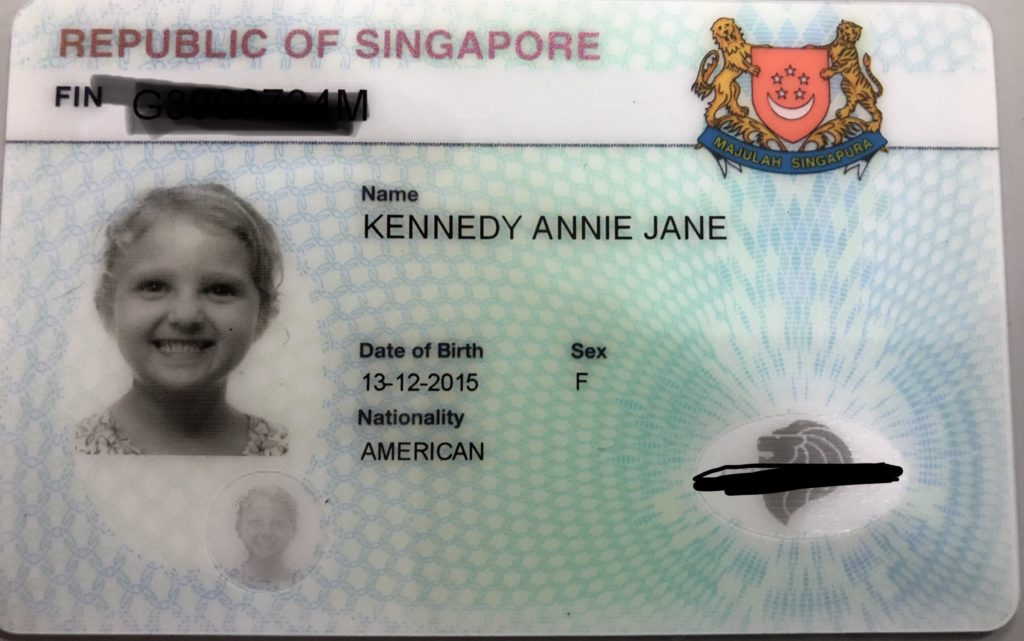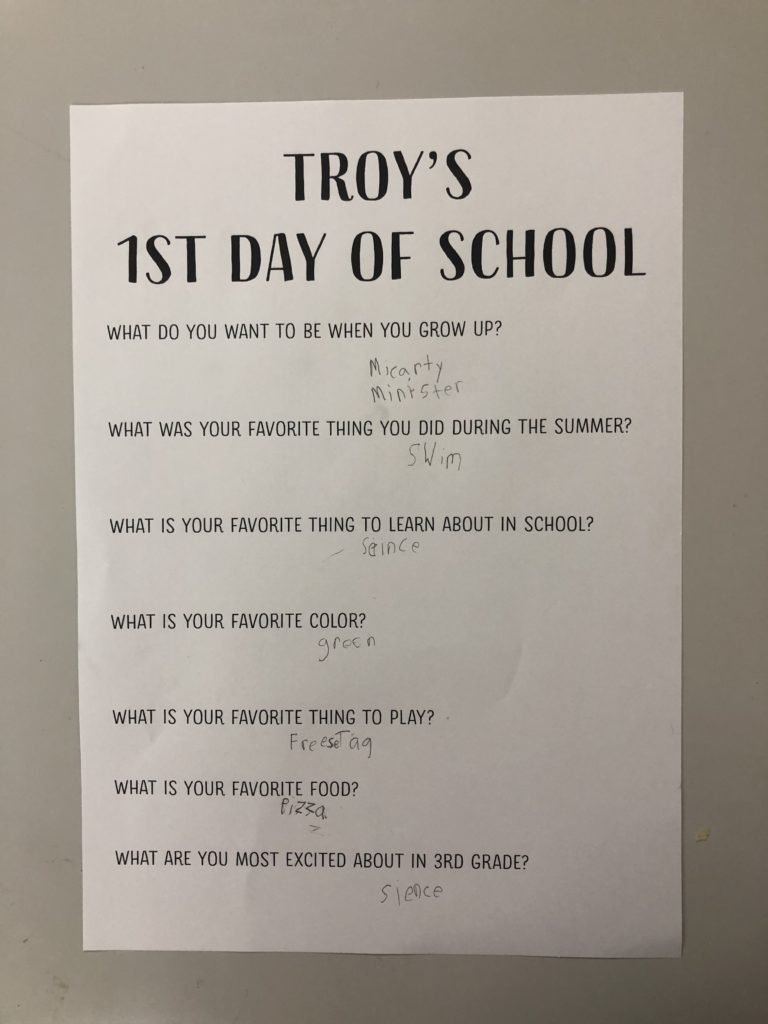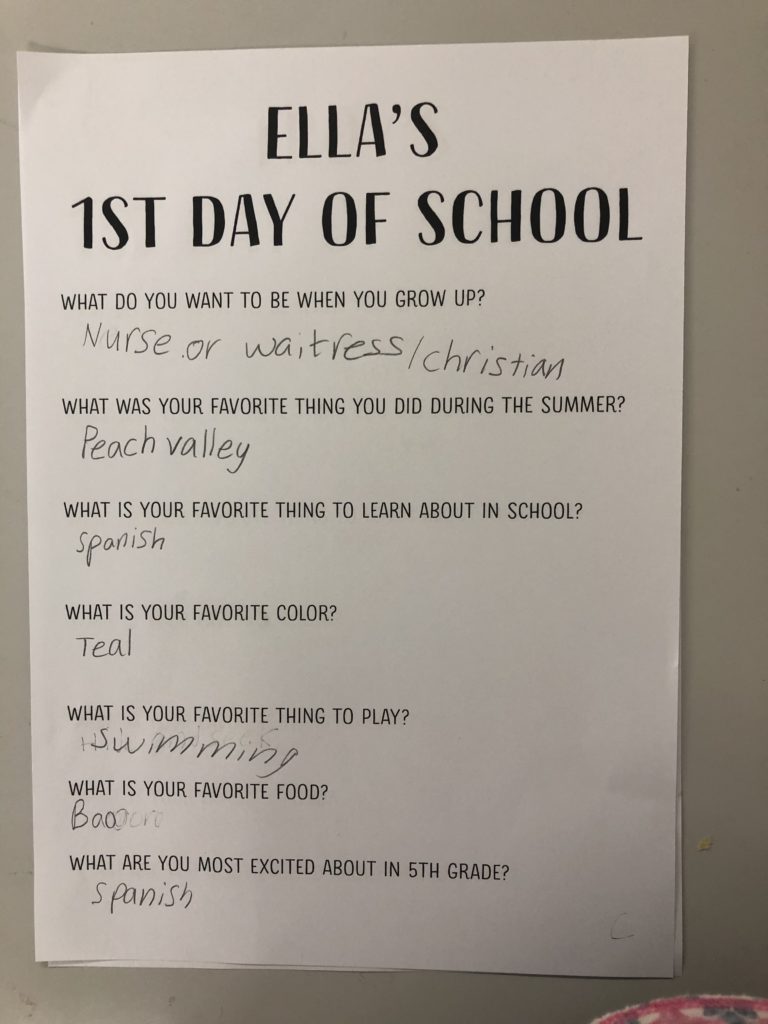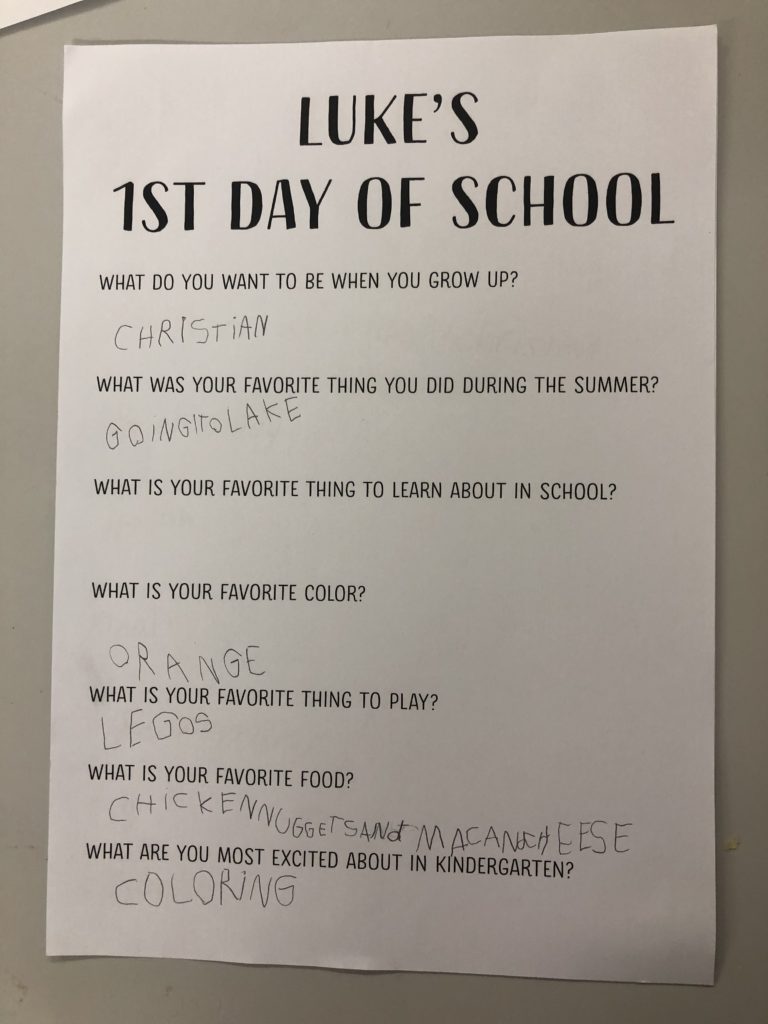Some of the adjustments we’ve made in Singapore since we’ve moved to Singapore are a product of adjusting to big city life. One of those adjustments involves getting from place to place across the island.
We don’t own, lease, or rent a vehicle in Singapore which is a big lifestyle change for us. Although we do ride in cars from time to time (mostly taxis) we’ve never driven in Singapore. There are two main reasons that we do not use a personal vehicle in Singapore. First, the cost of owning a car in Singapore is extremely expensive, particularly because Singapore heavily taxes car purchases. In fact, the cost of personal vehicles in Singapore is one of the reasons that Singapore consistently ranks at the top of cities in the world with the highest cost of living. Secondly, Singapore has an extensive, safe, clean, and efficient public transportation system. So, combined with our feet, we have many ways to get around the city without the use of our own vehicle. Generally, Singapore encourages the use of public transportation and discourages the use of personal vehicles.
Public Transportation in Singapore
The MRT (Mass Rapid Transit) is Singapore’s train or subway system. It is comprised of both above ground and underground trains. We live right next to the Lakeside MRT station on the west side of the island which is an above-ground section, and we enjoying watching the trains from our apartment. There are several different colored lines within the MRT system, and there is an on-going expansion of the system. The MRT is quite easy to navigate with easy-to-read maps and clear signage everywhere. For the most part, people using public transportation are orderly and it isn’t too crowded except maybe during peak times (though crowds have been generally reduced due to COVID-19) which also makes using public transportation easier.
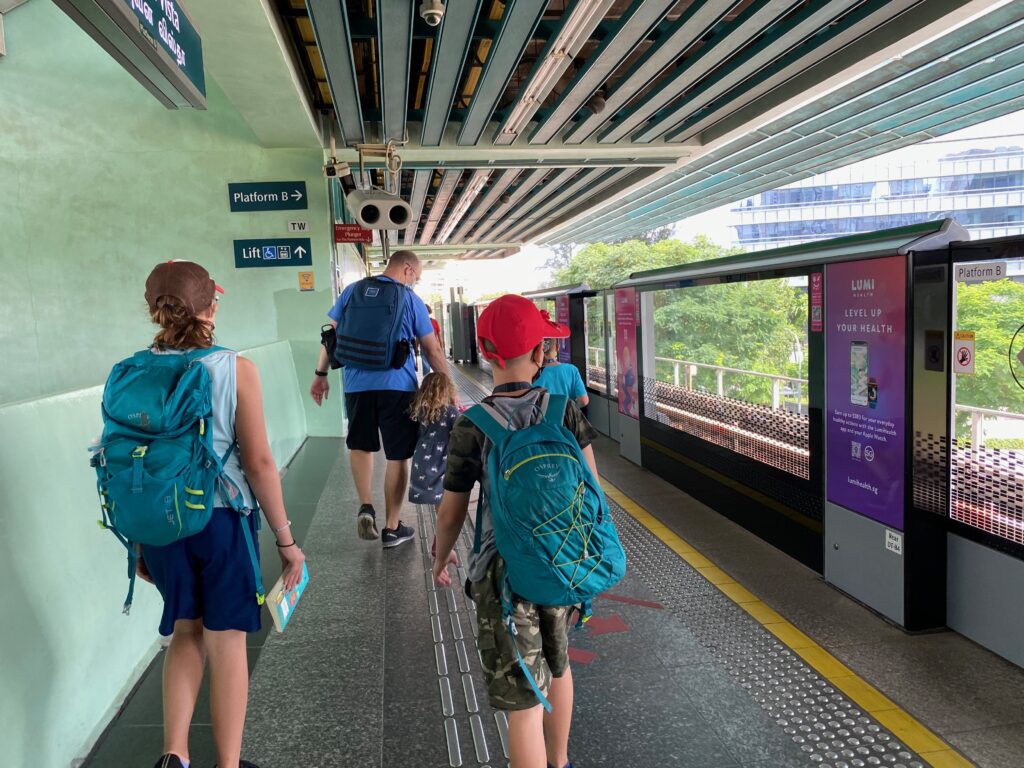
At the train platform walking to a gate to wait for the train.
Singapore also has an extensive bus system comprised of both single-level and double-level buses. The kids love riding the double-decker buses, especially if we can sit at the front. It is a fun way to explore and view the city.
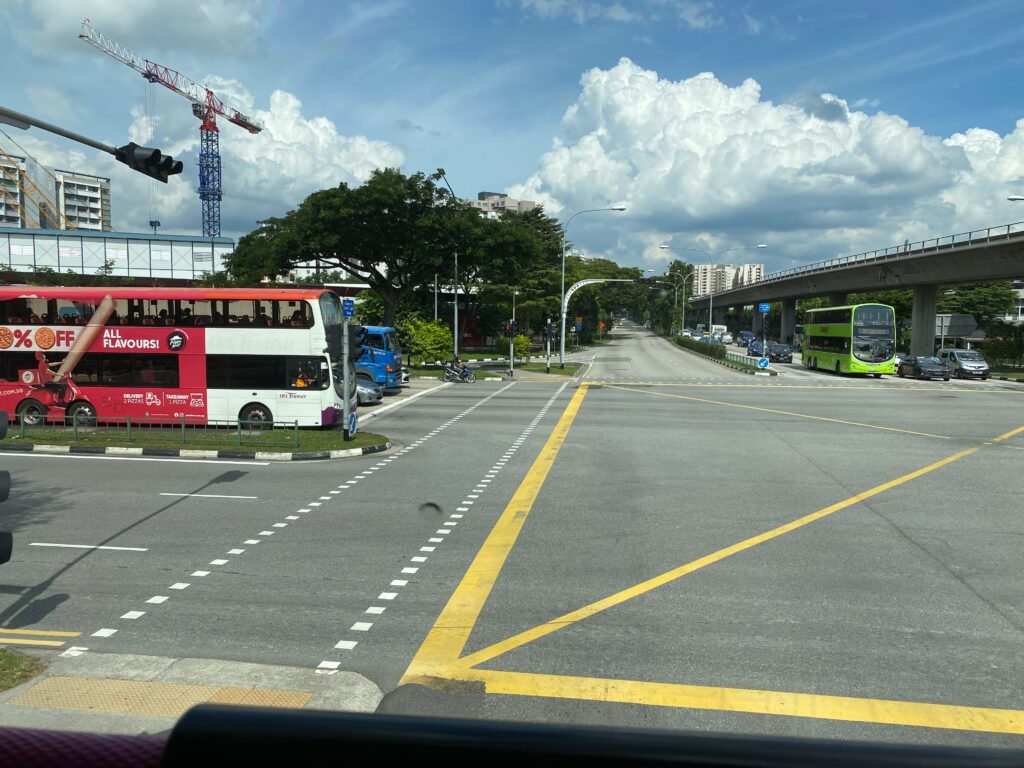
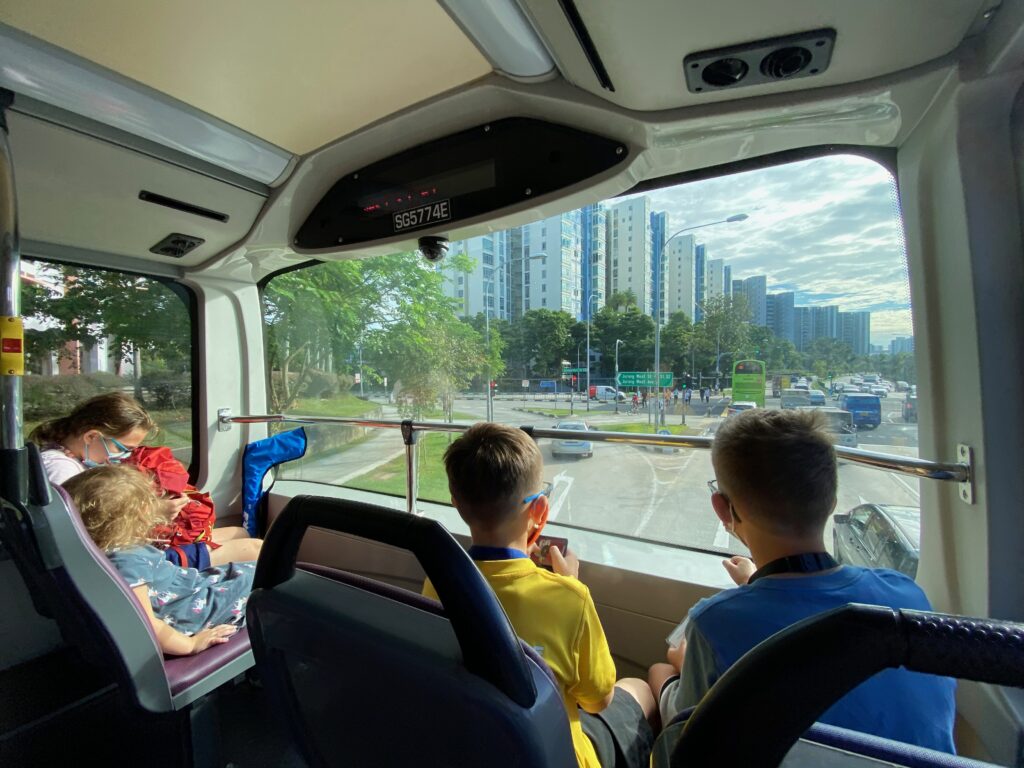
The kids riding at the top of a double-decker bus.
Taxis are also readily available in Singapore including traditional taxi services as well as Grab (the equivalent of Lyft or Uber).
Some Observations about Public Transportation in Singapore
Public transportation is very clean which fits right in with Singapore’s reputation as one of the cleanest cities in the world. The MRT trains are clean. The buses are clean. It is rare to see any kind of trash inside the trains or buses. You don’t have to check a seat before you sit down because the expectation is that it will be clean.
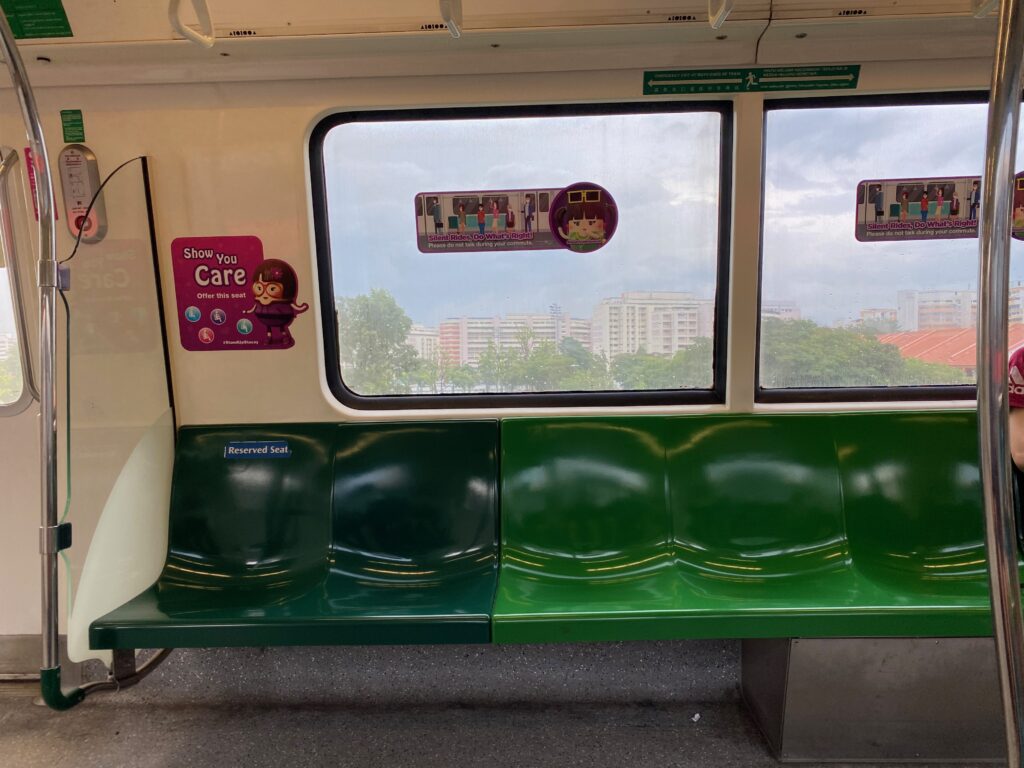
Eating and drinking (not even water!) are not allowed on public transportation or within MRT stations. This rule is strictly followed by Singapore residents and certainly helps contribute to the cleanliness of the trains and buses. People regularly carry food and drinks on public transportation that they’ve picked up from restaurants, but you’ll never see anyone consuming either (only once have I seen a group of teen boys defying the rule). One particular food item that isn’t allowed on public transportation is durian, a stinky fruit (descriptions of the smell often include things like rotting flesh and garbage) that many Singaporeans enjoy.

Riding on public transportation is generally quiet. Most of the time people are not talking much, nor are they talking on the phone. This was a little tough for our kids to get used to, but they’ve become accustomed to quiet rides on public transport. Noise on public transportation has been reduced even further since the COVID-19 outbreak because Singapore has a public campaign for “quiet rides” with a “Hush-hush Hannah” character who encourages riders to mask up and stay quiet to prevent the spread of COVID-19.
Public transportation is very safe which also aligns with Singapore’s reputation as one of the safest cities in the world. There is no reason to worry about pick-pockets or really anything else for that matter. It is not uncommon to see children riding on public transportation without adults because it is safe. We’ve been told by a local that there’s a saying in Singapore “low crime doesn’t mean no crime” encouraging Singaporeans to stay alert to help keep Singapore safe.
How do we get around in Singapore?
We use a combination of the MRT, buses, and our feet to get around most of the time. Since we live right next to an MRT station (its about a five minute walk from our condo), we use the MRT as our primary mode of transportation. Trent walks back and forth to the church building from our condo (about a 10-12 minute walk for him, longer if the whole family is walking to the building).
We also use taxis (mostly Grab) from time to time, but taxis are a more expensive option. Using a taxi takes about half the amount of time of public transportation, and there are times that we need to get somewhere more quickly than we could get to the location using public transportation or we have to carry a big load that would be difficult on public transportation.
What do the kids think of public transportation?
Most of the time, I think the kids view public transportation as an adventure. It’s fun for them to watch for the trains and hunt for seats when the train arrives. They love (especially Troy) looking at the maps and figuring out which way we should go. They don’t mind the little inconveniences that sometimes bother me that much. They are good about carrying a bag of their things (water bottles, wipes, books, etc.) that might otherwise be kept in a car that you need to have with you. They love to bring along a book to read on long trips or even play a game some of their friends here taught them called chopsticks. They’ve learned about the responsibility of keeping up with their fare cards. Although they do miss car rides listening to Spotify, singing along, and being able to talk freely, they are flexible and don’t complain. I don’t think any of them have ever even asked for us to have a car. They seem to understand that just like many other things, this change in lifestyle is a natural part to living life in Singapore.
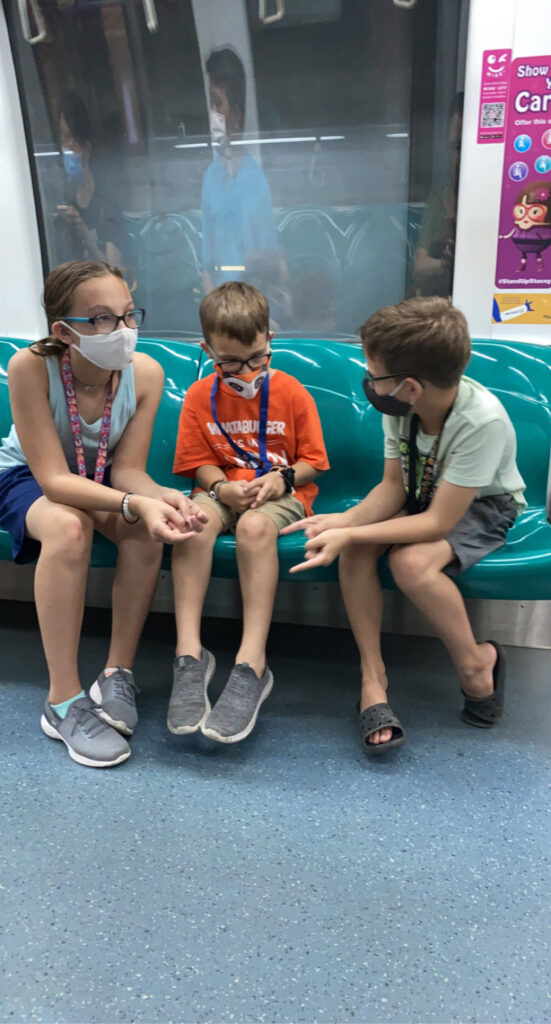
The older three kids playing chopsticks. 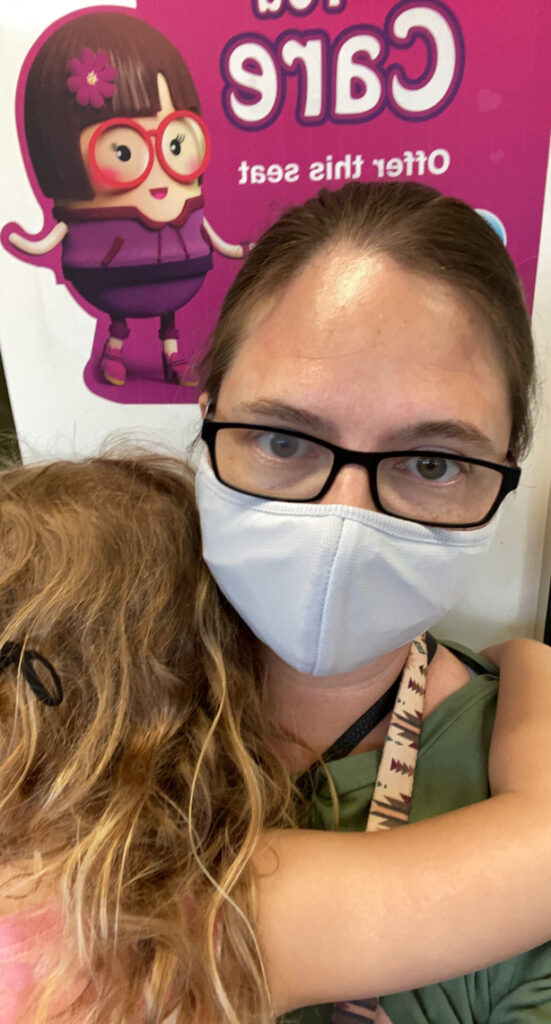
Annie sleeping on a long train ride.
-Lisa
